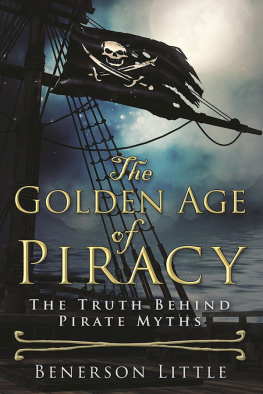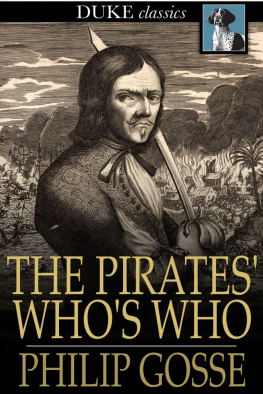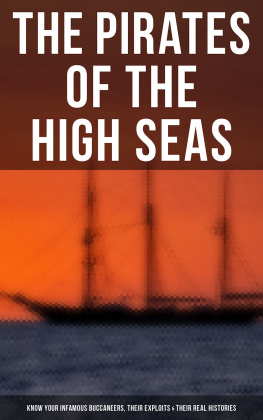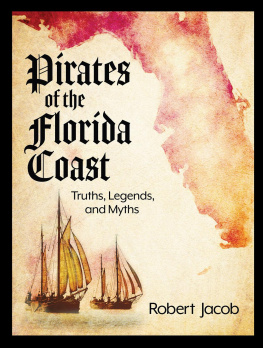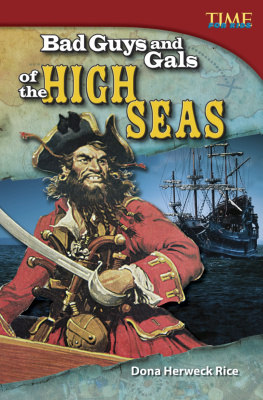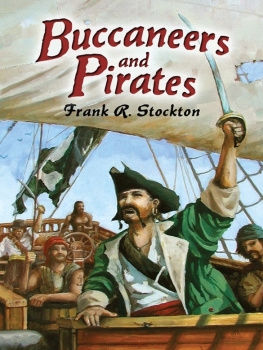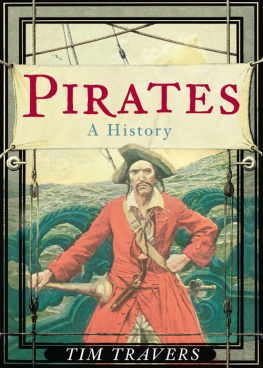CONTENTS
CHAPTER 1 KHEIR-ED-DIN BARBAROSSA, A.K.A. REDBEARD(1470s1546)
Two Brothers and One Legend Who Created Fear and Mayhem throughout the Mediterranean
CHAPTER 2 GRACE OMALLEY(1530?1603)
The Warrior Pirate Whose Guerilla-like Tactics Were Feared throughout Ireland
CHAPTER 3 FRANCIS draKe(1540?1596)
Singeing the Spanish Beard with Daring, Courage, and Surprise Tactics
CHAPTER 4 DIEGO THE MULATTO (unknown1673)
Honor, Vengeance, and Deception on the Spanish Main
CHAPTER 5 HENRY MORGAN(16351688)
The Fearless Tactical Genius Who Sacked the Spanish Main
CHAPTER 6 JUAN CORSO(unknown1685)
Barbaric Ambushes in Shallow Waters
CHAPTER 7 BARTHOLOMEW SHARP(1650post 1699)
A Gambler at Sea and on Shore Who Broke New Frontiers
CHAPTER 8 EDWARD BLACKBEARD TEACH(unknown1718)
Here Was an End of That Courageous Brute
CHAPTER 9 BARTHOLOMEW ROBERTS(16821722)
A Genius for Finding the Game and Avoiding the Wardens
CHAPTER 10 EDWARD NED LOW(1692/96?1724)
By Far the Most Bloodthirsty of All
CHAPTER 11 KANHOJI ANGRIA(unknown1729)
The Invincible Admiral of the Pirate Coast of India
CHAPTER 12 CHENG I SAO(1775?1844)
Leading a Thousand Deadly Wasps of the Ocean
CHAPTER 13 Jean laFitte(1782?1823)
The Last Great Pirate of the Age of Sail
INTRODUCTION
I n the history of the world there are few figures more romanticized than the pirate. Heand, yes, even shehas been with us for at least 3,500 years. When we consider that sea trade has existed for at least 8,000 years, and that our ancestors or their cousins probably first launched a canoe or raft upon the saltwaters at least 130,000 years ago, it is likely that piracy is one of the worlds oldest professions, right along with hunting, farming, and, as the saying goes, prostitution. Where goods and gold travel, so do thieves.
It should come as no surprise that the pirate has our regard, deservedly or not. Pirates did not follow the common coursethey set their own. They lived outside the bounds of mundane day-to-day existence, and sailed the seas instead, making their own rules and society, rebelling against order, and living as they pleased. Their image is irresistible: a rakish ship sweeps swiftly down upon a hapless merchantman. The victims unlucky crew quakes in fear at the sight of the pirate ship as it hoists its terrible black flag and opens its gunports to reveal a grinning broadside. The pirate fires a broadside, and the merchantman one in return. They blaze away at each other, sending thick plumes of gun smoke across the water between them. Yards and masts shiver and crash to the deck, and soon the ships collide. The pirate crew hurls grappling hooks, then leaps and swings onto the merchantmans decks, cutlasses waving, pistols erupting with fire and lead. Soon, the merchantmans deck is awash in blood, its captain has a sword at his throat, and the victims colors slowly drift down from the masthead to the deck.
But pirates didnt swing from ship to ship when they boarded, they certainly were not Robin Hoods, and the blood they spilled was a terrible thing to witness. It is well to remember that pirates were thieves, that they lived off of the goods and labor of others violently or by the threat of violence. Yet even acknowledging this does not stop most of us from admiring them, even if only secretly or guiltily. We know pirates are thieves, that often they were cruel, evil menand cruel, evil women as wellwho deserved to die. Nonetheless, we elevate them as heroes, even as far as the heavens themselves. If you look south at night, you can see Jasons Argo, the first known pirate and pirate-hunting ship, now sailing the firmament.
To understand pirates, we have to look beyond the enticing images Hollywood and swashbuckling novelists have given us. But not to worrythe reality of pirates does not diminish the image at all, except perhaps of the pirates purported nobility. They remain fascinating figures. There is no need to invent or reinvent their deeds, or their characters; thus I have kept strictly to the facts, proving that dramatic exaggeration is unnecessary. Their deeds were real, and all who witnessed them would have felt their hearts pounding with excitement and fear. Call it a romantic realism, if you like, for that is what this book intends: to show the great pirates as they really were.
To do this, we need to look closely at what pirates were all about: plundering ship and shore, and getting away with itand often not getting away with it in the end. This requires that we discover what their tactics were and how different pirates used them. Some pirates used the tried-and-true, relying on the threat of force to strike fear into the hearts of their prey, as Blackbeard, Bartholomew Roberts, and Ned Low did. Others had to work harder, relying on both courage and cunning to seize wealth in the face of great odds, as Henry Morgan and Bartholomew Sharp did, for example. Tactics, after all, were at the heart of their success.
In writing about these notorious men and women, I have looked at them through two avenues. First, I gleaned what I could from extensive research, both scholarly and practical, ranging from the detailed study of written evidence to the extensive firing of a variety of replica pirate weapons. But just as important, I have also looked at pirates through the eyes of my experience at sea, especially that of my seven years as a U.S. Navy SEAL. The pursuit and boarding of great ships by men in small boats is little different today than it was in the age of sail, and the understanding of these tactics gave me great insight into pirate attacks, enabling me to decipher details I might otherwise have missed. I knew, for example, that weapons must be test-fired before an attack, and that when transiting in open boats en route to a target, vital equipment must be secured, and if it were vulnerable to seawater, then waterproofed as well. And sure enough, when I looked carefully, I discovered that pirates did the samethey had to. On a much broader scale, I understood the minds of those adventurers who bear arms on the sea today, and this helped me understand those who did so in the past.
The following should help the reader navigate his or her way through the world of the pirate. In particular, consider not only the different pirate tactics, but also how different pirates used the same tactics, and whether and why they were successful. Regarding seagoing language, one should note that a cannon at sea was a gun or a great gun. A cannon was called a cannon only ashore. Windward meant the direction from which the wind blew, and leeward away from it. The names of ships can sometimes be confusing, because many ships and other vessels had the same ones. In other words, a ship in one chapter is not likely to be the ship of the same name in another chapter. The names of places can be similarly confusing. There was more than one Trinidad in the Caribbean, for example, and more than one Tortuga, and where necessary, distinctions are noted. Further, place-names often changed over the centuries: in this book, for example, you will see Puerto del Principe change to Porto Principe. It is known today as Camagey. Some places do not even exist anymore. Venta de Cruces, for example, is underwater, lost during the building of the Panama Canal.


